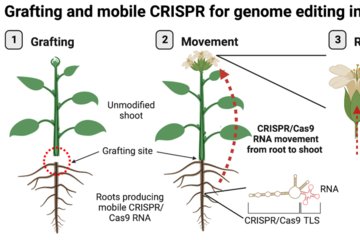Finding the balance in the plant immune response
Researchers describe novel regulatory mechanism that keeps plant immune responses in check
For any organism, the immune system must be sensitive enough to respond to invaders but not so sensitive as to fire all the time and attack its own cells – so-called autoimmunity. A new study led by Jijie Chai at Westlake University, China and Paul Schulze-Lefert from the Max Planck Institute for Plant Breeding Research in Cologne, Germany, has shown that pivotal plant immune molecules are tightly packaged and are in this way shielded from inappropriate activation.

In plant immunity, recognition of invading pathogens by plant immune receptors often results in a regulated form of cell death that is restricted to the site of the attempted infection. This cell death serves its purpose when the scale of the response is commensurate with the threat faced. However, how do plants ensure that this suicide response does not get out of control, causing damage to the plant? Scientists now have an answer to this question.
Many plant immune receptors are activated unintentionally when they are produced in large quantities inside plant cells. However, the nightshades, which include many agriculturally important crops such as the tomato, potato and eggplant, have a group of immune receptors that are present at high levels without becoming activated and causing cell death. To get a handle on how these proteins were inactive despite being present at high levels, the scientists expressed and purified one member from this group of proteins and analysed its weight. This information gave the scientists further insights into the structural characteristics of the protein and showed that the molecules were forming complexes of units that were inactive. The researchers could establish that these complexes were responsible for preventing activation, because, when they interfered with the packaging of the receptor, cell death was enhanced in the presence of a viral protein.
Apart from the self-packaging mechanism, the authors’ analysis revealed another striking feature: the immune protein was bound by a tiny molecule, called inositol phosphate, which is important for the activation of the receptor and the cell death response. Inositol phosphates come in a variety of flavors and were linked to plant defense against pathogens more than 15 years ago, but it remained unclear how and where these tiny molecules might act inside plant cells. Now there is an answer, because the researchers could establish that the entire group of nightshade immune receptors, which are present in high concentrations, have the capability to bind inositol phosphates.
Why do plants then express certain immune receptors at such high levels? One explanation could be that such a constitutive accumulation might prepare plants for a rapid response to infection. Architecturally related immune molecules from animals, including humans, have also been found to form oligomers. Thus, this appears to be a strategy employed by organisms in different kingdoms of life. Summing up, Paul Schulze-Lefert points out how “The self-packaging of immune receptors inside cells is an elegant means of nature to prepare for a rapid immune response without the risk of autoimmunity”.












